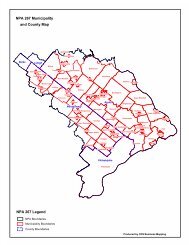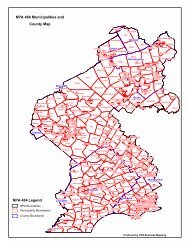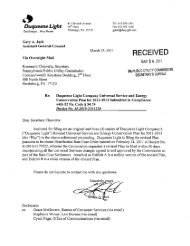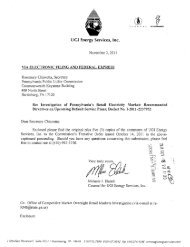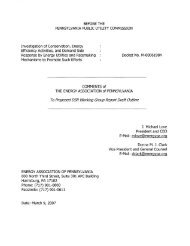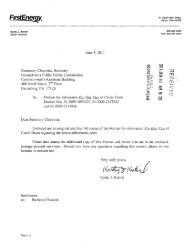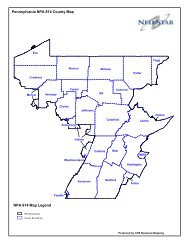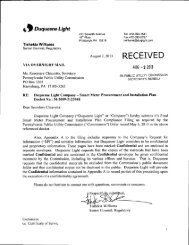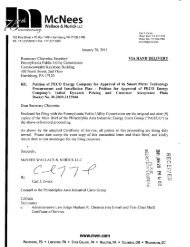2010 Report - Pennsylvania Public Utility Commission
2010 Report - Pennsylvania Public Utility Commission
2010 Report - Pennsylvania Public Utility Commission
You also want an ePaper? Increase the reach of your titles
YUMPU automatically turns print PDFs into web optimized ePapers that Google loves.
ReliabilityFirst CorporationReliabilityFirst Corporation (RFC) is one of eightregional reliability councils within NERC, and hasreplaced the reliability oversight functions ofMAAC, ECAR and MAIN. The two main controlareas within the RFC footprint are the PJM RTOand MISO. Two-thirds of the RFC load is in PJM.From the perspective of the RTOs, 60 percent of theMISO load and 85 percent of the PJM load is withinRFC. The reliability of these two RTOs determinesthe reliability of the RFC region. The reliabilityassessment summarized herein reflects the resourceadequacy of each RTO based on their individual reserve margin requirements. 67Compliance StandardsAnalyses were conducted by PJM and MISO to determine the reserve margins that were equivalentto the RFC Loss of Load Expectation (LOLE) criterion of not exceeding one occurrence in 10years (0.1 day/year) on an annual basis for their planning area. RFC’s assessment of long-termPJM resource adequacy is based on the reserve margin target determined from the PJM ReliabilityPricing Model analysis for the planning year 2009-10. This reserve margin target is 15.0 percentfor 2009, 15.5 percent for <strong>2010</strong> and 2011, and 16.2 percent thereafter. The 2009 PJM ReserveRequirement Study, however, recommends a 15.3 percent margin beyond 2012. 68 The MISOreserve margin target for 2009 was 15.4 percent, and is used to assess each of the next 10 years.The reserve margin targets are used as a general indicator of the overall adequacy of resources inthe RFC region. 69Reliability AssessmentRFC anticipates that sufficient resources will be available for PJM, MISO and the RFC regionalarea to have adequate reserves throughout the next 10 years. Summer reserve margins range froma high of 27.2 percent in 2009, declining to 18.2 percent in 2018. This assessment assumes thatfuture planned and a portion of conceptual capacity is deliverable. Based only on existingresources, the reserve margins are projected to decline from 26.9 percent in 2009, to 11.7 percentin 2018, which is an improvement over the previous forecast, due mainly to current economicconditions. See Figure 54.67 NERC, 2009 Long-Term Reliability Assessment, October 2009.68 PJM, 2009 PJM Reserve Requirement Study, Nov. 4, 2009.69 RFC, Long Term Resource Assessment 2009-2018, October 2009.Electric Power Outlook for <strong>Pennsylvania</strong> 2009-2014 65



